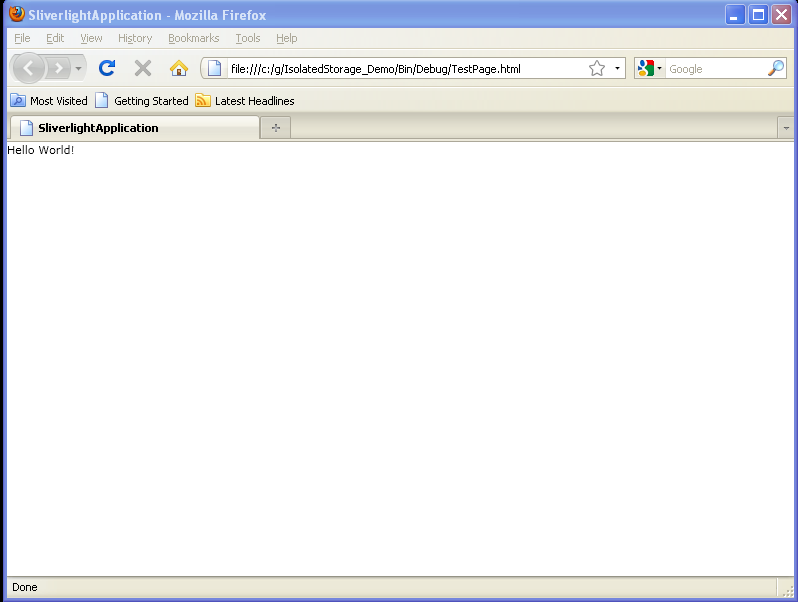IsolatedStorage Demo

<UserControl x:Class='SilverlightApplication3.MainPage'
xmlns='http://schemas.microsoft.com/winfx/2006/xaml/presentation'
xmlns:x='http://schemas.microsoft.com/winfx/2006/xaml'
xmlns:d='http://schemas.microsoft.com/expression/blend/2008'
xmlns:mc='http://schemas.openxmlformats.org/markup-compatibility/2006'
mc:Ignorable='d'
d:DesignWidth='640'
d:DesignHeight='480'>
<Grid x:Name="LayoutRoot" Background="White">
<Grid.RowDefinitions>
<RowDefinition />
<RowDefinition />
</Grid.RowDefinitions>
</Grid>
</UserControl>
//File: Page.xaml.cs
using System;
using System.Collections.Generic;
using System.Linq;
using System.Net;
using System.Windows;
using System.Windows.Controls;
using System.Windows.Documents;
using System.Windows.Input;
using System.Windows.Media;
using System.Windows.Media.Animation;
using System.Windows.Shapes;
using System.IO.IsolatedStorage;
using System.IO;
namespace SilverlightApplication3
{
public partial class MainPage : UserControl
{
public MainPage()
{
InitializeComponent();
this.Loaded +=new RoutedEventHandler(Page_Loaded);
}
void Page_Loaded(object sender, RoutedEventArgs e)
{
try
{
using (IsolatedStorageFile isf = IsolatedStorageFile.GetUserStoreForApplication())
{
using (IsolatedStorageFileStream ifs = new IsolatedStorageFileStream("output.txt", FileMode.Create, isf))
{
using (StreamWriter sw = new StreamWriter(ifs))
{
sw.WriteLine("Hello World!");
}
}
using (IsolatedStorageFileStream ifs = new IsolatedStorageFileStream("output.txt", FileMode.Open, isf))
{
using (StreamReader sr = new StreamReader(ifs))
{
string firstLine = sr.ReadLine();
DisplayOutput(firstLine);
}
}
}
}
catch (Exception ex)
{
DisplayError(ex);
}
}
private void DisplayError(Exception ex)
{
TextBlock tbExceptionType = new TextBlock();
TextBlock tbExceptionMessage = new TextBlock();
tbExceptionType.Text = "Type: " + ex.GetType().ToString();
tbExceptionMessage.Text = "Message: " + ex.Message;
Grid.SetRow(tbExceptionType, 0);
Grid.SetRow(tbExceptionMessage, 1);
LayoutRoot.Children.Add(tbExceptionType);
LayoutRoot.Children.Add(tbExceptionMessage);
}
private void DisplayOutput(string output)
{
TextBlock tbOutput = new TextBlock();
tbOutput.Text = output;
Grid.SetRow(tbOutput, 0);
LayoutRoot.Children.Add(tbOutput);
}
}
}
Related examples in the same category